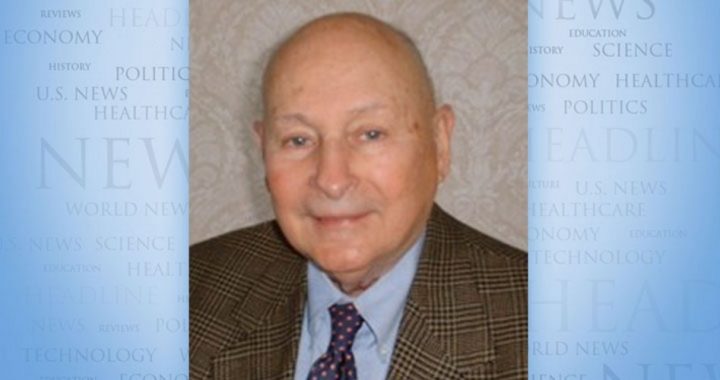
With President Obama’s proposal to provide the first two years of community college free to qualified students, I was reminded of what I had written about community colleges some years ago.
Back in 1984, I was asked by the Center for the Study of Market Alternatives, a conservative think-tank in Caldwell, Idaho, to analyze and comment on a proposal put forth by the Idaho Task Force on Higher Education to establish a statewide system of community colleges. The state legislature was worried about the cost of the project and had requested the Caldwell group to have someone evaluate the plan and submit it to the legislature which would have to vote on the plan’s approval or disapproval.
The plan was sent to me and I analyzed it line by line. I sent my report to Idaho and then flew there to defend it. What struck me most about the plan was the emphasis on buildings and faculty salaries and the lack of any definition of “quality” education. The plan stated: “Quality is difficult to define, and no easy yardstick can be applied to measure it precisely.” That was simply not true. The public schools I had attended in the 1930s and ‘40s in New York City provided quality education, and there was no mystery about how to produce it. I wrote, “The only thing the Task Force can guarantee is the imposition of a greater, permanent tax burden on the citizens of Idaho.”
I asked why the public schools of Idaho were producing so many graduates in need of remedial education in community colleges. Obviously, if the educators in the elementary and high schools of the state could not provide a quality education, why should anyone believe that they would be able to provide it in these new tax-funded community colleges?
The plan under consideration was written by the Education Commission of the States (ECS), an establishment organization of experts and technicians dedicated to getting increased financial support for state-owned and -operated education systems. They believe that more money, more buildings, more administrators, and higher-salaried faculty will solve our educational problems. They do not deal with educational philosophy, which is the conceptual basis of any education system.
As a result of my report, the legislators rejected the Task Force’s plan. I had argued:
While the community college can be seen as a laudable attempt to help students in need of a second chance, it is in reality the state’s solution to its own incompetence as educator. Succumbing to the community college syndrome is surrendering to institutionalized failure and absolving the public schools of their responsibilities. This is something the taxpayers of Idaho ought not to sanction by their support…. Remember, once the community colleges are built, the state will have created a professional constituency with a vested interest in failure.
That was written in 1984. Since then, Idaho has established three community colleges: North Idaho College in Coeur D’ Alene, College of Southern Idaho at Twin Falls, and College of Western Idaho, Nampa. The education establishment finally got its way.
Elsewhere in the United States, community colleges had been springing up like wild mushrooms in the 1970s, as educators were able to persuade taxpayers to shell out the additional costs. New York City alone established seven community colleges within city limits.
Recently, the New York Times (12-21-14) ran an extensive story by reporter Gina Bellafante on LaGuardia Community College, named after its famous and colorful mayor, Fiorello LaGuardia. The school officially opened on September 22, 1971. The purpose of the article was to give the reader an inside view of what goes on in a community college.
Academically, the college isn’t doing that well. Of the full-time students who started at LaGuardia in 2009, less than 17 percent graduated within three years. Only a quarter of the students complete their associate degrees in six years, a figure that is high for urban community colleges, the Times article said. In other words, the college has a 75-percent failure rate. According to the article, two-year colleges enroll nearly half of all undergraduates in the country, the majority coming from the lower half of the income scale.
Gail Mellow, LaGuardia’s president, told the reporter, “The teaching of teachers is the single most neglected aspect of higher education. It cannot be emphasized enough that perhaps no other cohort of instructors in American education confront such a consistently low-performance group of students on a daily basis.”
But that’s the stated purpose of the community college: to take the wreckage of the public high schools and try to give them some purpose in learning a trade or skill. They are incapable of undoing the damage done to these students in the first three years of elementary school. That’s where ignorant teachers commit their crimes by imposing teaching methods that deliberately dumb-down the students. Since no one in higher education understands what goes on in the first three grades, they haven’t a clue as to how to undo the damage.
One of LaGuardia’s teachers complained that many of his students “cringe at complexity…. There’s a mistrust or antagonism between teachers and students because authority hasn’t traditionally been good to them. Their experiences in the education system have been coercive. It’s not really clear to them what the value of academic knowledge actually is. If they come here with the goal of doing something very specific — to become a stewardess, or a makeup artist — they may think, ‘What’s the point?’”
This left-wing teacher was able to get an otherwise unreachable student interested in Karl Marx. The student’s eyes brightened as the significance of Marx was explained. The teacher could have introduced the student to the Founding Fathers or the Declaration of Independence or Thomas Paine. Instead he thought that Marx was appropriate for this semi-literate member of the underclass.
Students who have been miseducated in elementary school know that their learning problem started at school. Before entering school they had taught themselves to speak their own language and they felt very intelligent. Children at that preschool age are dynamos of learning. But once they entered school and couldn’t learn to read by the sight method they began to feel dumb. And so they grow up knowing that they are both intelligent and stupid. They can’t understand why they can’t learn to read. Of course, no one tells them that the aim of the teaching method is to make sure they don’t learn to read. But that wouldn’t make sense. How these impaired students deal with this situation depends on the individual himself.
So, do we really need community colleges? Unfortunately we do. In 1984 I wrote that if the public elementary schools could be forced to actually teach their students the basics in the traditional manner, there would be no need for remedial community colleges. But that argument fell on deaf ears, since public elementary schools are even worse today than they were in 1984. And since the public has been led to believe that the problem is with the students and not the schools, the educators can get away with educational malpractice on a scale that staggers the imagination.
And since most of the students at the community colleges come from the inner city underclass, there must be institutions of learning that provide affordable access to them, even though the vast majority of them will drop out after they find out that the community college cannot cure their learning disability. But all of that is part of America’s slow decline into imbecility. Our scientific elite may be making incredible strides in technology, but when it comes to public education, the system is now so corrupt and steeped in ignorance and deception that many parents have simply abandoned it.
And as long as we still have the freedom to homeschool and create alternative forms of education, no overall reform of the public system will be forthcoming.




